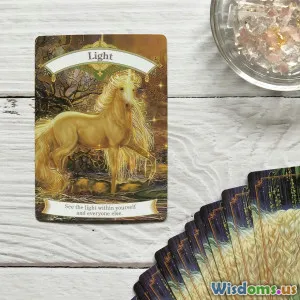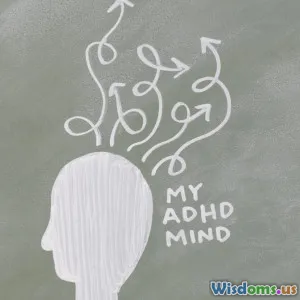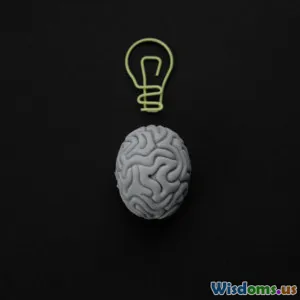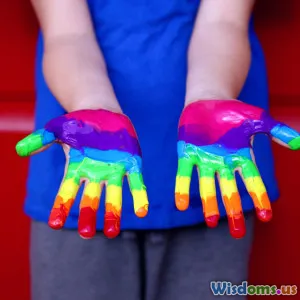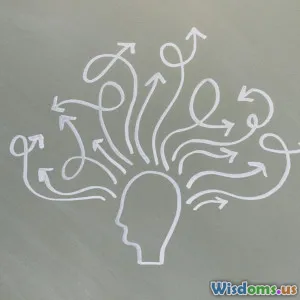
Understanding the Symbolic Language of Dreams
8 min read Explore the rich symbolic language of dreams, uncover hidden meanings, and decode messages from your subconscious mind. (0 Reviews)
Understanding the Symbolic Language of Dreams
Dreams have fascinated humans for millennia — they offer a mysterious glimpse into the subconscious mind, speak in a language that is symbolic rather than literal, and are often cryptic puzzles to solve. Decoding this symbolic language can provide profound insights into one’s emotional state, hidden desires, fears, and even future possibilities. But what really lies beneath the surface of our dreams’ vivid imagery? How can we learn to understand the silent language they speak?
The Fascination with Dreams: Why Symbolism?
Dreams often use symbols — images, objects, or scenarios that stand for something else — because the mind doesn’t communicate in straightforward sentences during sleep. Neuroscience shows that the brain’s logical faculties rest during rapid eye movement (REM) sleep while emotional and memory areas are active, which explains why dreams conjure striking imagery and intense feelings.
Carl Jung, one of the pioneering dream theorists, asserted that dreams speak a universal symbolic language that taps into collective unconscious archetypes. According to Jung, symbols are bridges between the conscious self and the deeper psyche.
Example: The Flying Symbol
A common dream motif — flying — often represents liberation, ambition, or a desire to transcend current obstacles. But the details matter: flying effortlessly might symbolize confidence and freedom, while struggling to fly often reflects anxiety or lack of control.
Historical and Cultural Perspectives on Dream Symbols
Throughout history, many cultures recognized the importance of dream symbols:
- Ancient Egyptians considered dreams prophetic messages from gods, with intricate dream manuals cataloging common symbols.
- Greeks and Romans believed dreams revealed divine guidance and personal destiny, often visiting temples to seek dream interpretations.
- Indigenous traditions like the Native American Lakota would use symbolic visions from dreams during rites of passage for spiritual insight.
Interestingly, despite cultural differences, many symbols such as water (emotions, subconscious), serpents (transformation, danger), and journeys (personal growth) recur globally, demonstrating that the symbolic language overlaps across civilizations.
Modern Psychology and the Science of Dream Symbols
Modern psychologists, such as Sigmund Freud and Carl Jung, contributed dynamic frameworks for dream interpretation:
- Freud’s psychoanalytic model suggests dream symbols often mask repressed desires. For example, dreaming of locked rooms might symbolize hidden sexual anxieties.
- Jung expanded the field by emphasizing personal and universal archetypes: a symbol such as a shadow in a dream could represent undiscovered parts of the self.
More recently, sleep studies have confirmed that emotional centers in the brain activate during dreams, supporting the role of dreams in emotional processing and problem-solving.
Dream Symbol Databases and Studies
Institutions like the International Association for the Study of Dreams compile common dream symbols reported by thousands. Data reveals patterns such as:
- Falling dreams often express loss of control or fear.
- Being chased could signify avoidance of a real-life problem.
Although these patterns provide helpful general guidance, dream symbols must be interpreted in the context of the dreamer’s personal experience.
Interpreting Your Own Dream Symbols: Practical Tips
1. Keep a Dream Journal
Document your dreams immediately after waking. Details like colors, people, emotions, and events help track recurring symbols and personal meanings.
2. Reflect on Personal Associations
What does a specific symbol mean to you? For instance, dreaming of a dog could symbolize loyalty or fear depending on your relationship with dogs.
3. Use Symbol Dictionaries Thoughtfully
Books like “The Dream Dictionary” by Tony Crisp or online repositories offer general meanings; use these as starting points, not strict rules.
4. Seek Patterns and Emotional Tone
Identify patterns that emerge across multiple dreams or notice the overall emotional atmosphere — is it anxiety, joy, confusion?
5. Explore Cultural or Spiritual Contexts
Your cultural background may color how symbols appear to you. Some spiritual traditions emphasize dreams as portals for guidance and healing.
Real-World Insight: Dream Symbolism in Therapy
Many therapists incorporate dream analysis to unlock unconscious conflicts:
Dr. Bonni Goldstein, a psychologist specializing in integrative therapy, says, “Dreams can illuminate emotional blockages or reveal unconscious patterns – symbols in dreams open pathways to self-awareness and healing.”
One case study involved a patient who repeatedly dreamt of being trapped in a maze symbolizing her feeling stuck in a toxic relationship. Exploring these symbols in therapy helped her gain courage to change her situation.
The Limitations and Pitfalls in Dream Symbol Interpretation
Interpreting dreams isn’t an exact science — many approaches overlap but sometimes contradict.
- Not every symbol is universal; personal context is crucial.
- Over-analysis may impose false meanings.
- Skepticism versus open-minded exploration must be balanced.
Dreams remain partly a mystery; the symbolic language invites curiosity and exploration rather than rigid decoding.
Conclusion: Embracing the Mystery and Insight of Dream Symbols
The symbolic language of dreams serves as a fascinating conduit to the subconscious mind, blending ancient wisdom, psychology, and neuroscience. By learning to observe and interpret your dream symbols with curiosity and mindfulness, you open the door to a deeper understanding of your inner self — a treasure chest of insights that can inspire personal growth and transformation.
Whether it’s a soaring flight over mountains or a puzzling encounter with strange animals, your dreams speak in symbols that, when deciphered, reflect the complex, beautiful tapestry of the human psyche.
So next time you wake from a vivid dream, remember: within that symbolic tapestry lies a message waiting to be discovered.
Rate the Post
User Reviews
Popular Posts










